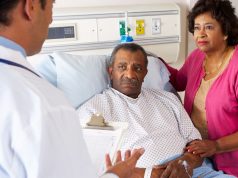Health disparities in PAD associated with poor limb and cardiovascular outcomes
By Elana Gotkine HealthDay Reporter
MONDAY, May 20, 2024 (HealthDay News) — In a clinical practice guideline issued by the American Heart Association, the American College of Cardiology, and nine other medical societies, updated recommendations are presented for the management of lower-extremity peripheral artery disease (PAD). The guideline was published online May 14 simultaneously in Circulation and the Journal of the American College of Cardiology.
Heather L. Gornik, M.D., from the University Hospitals Harrington Heart & Vascular Institute in Cleveland, and colleagues note that PAD is a common cardiovascular disease associated with the risk for amputation, myocardial infraction, stroke, and death. Four clinical subsets of PAD were defined: asymptomatic PAD, chronic symptomatic PAD, chronic limb-threatening ischemia, and acute limb ischemia. In most patients, PAD is detected through history, physical examination, and resting ankle-brachial index. Health disparities can lead to poor limb and cardiovascular outcomes, which should be addressed at the individual patient and population level.
For patients with PAD, the researchers recommend effective medical therapies should be prescribed to prevent major adverse cardiovascular events and major adverse limb events; these include antiplatelet and antithrombotic therapy, lipid-lowering and antihypertensive therapy, diabetes management, and smoking cessation. For people not at increased risk for bleeding, rivaroxaban plus low-dose aspirin is effective. Structured exercise is a core component of PAD care. For patients with chronic limb-threatening ischemia, revascularization should be used to prevent limb loss; this can also improve quality of life and functional status in patients with claudication not responsive to medical therapy and structured exercise.
“It’s important to recognize the signs and symptoms of PAD and move quickly to initiate treatment to improve outcomes and reduce risks,” Gornik said in a statement.
Several authors disclosed ties to the biopharmaceutical and medical device industries.
Copyright © 2024 HealthDay. All rights reserved.








